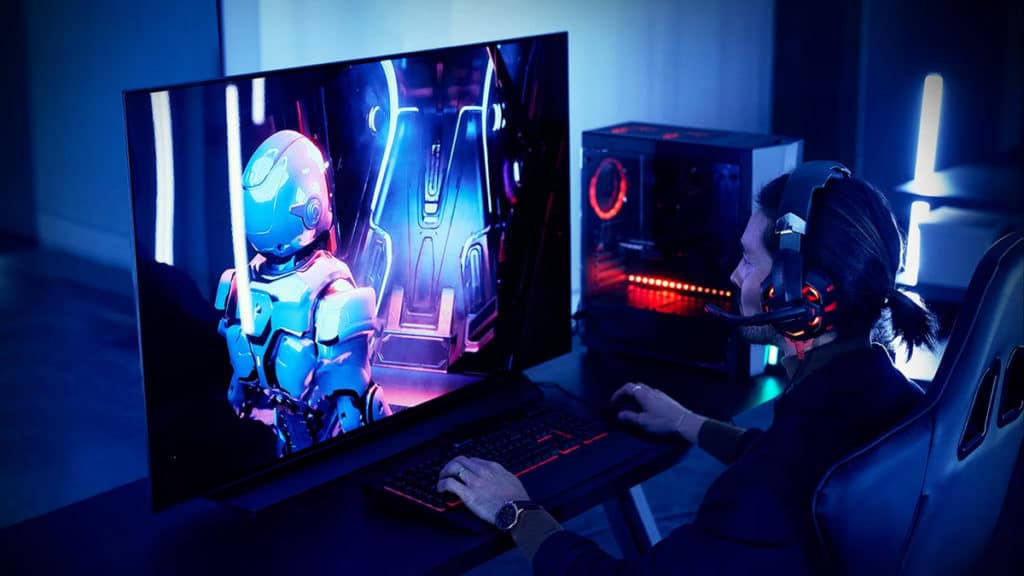
Researchers have discovered an innovative solution for preventing the burn-in issue that affects OLED display panels. While the adoption of OLED technology continues to grow throughout a number of industries ranging from enterprise use, gaming, mobile technology, and even day-to-day office work, its vulnerability to burn-in from prolonged static images remains. Numerous manufacturers including MSI, Samsung, and LG, have incorporated solutions to prevent such damage from occurring but it appears that an underlying technological root cause is to blame and there could now be an answer to fixing it.
Researchers from the University of Cambridge have published a paper in the Journal of Nature explaining how blue LEDs have been the culprit for burn-in. Blue LEDs are a little late to the game when it comes to display technology, having only just been invented by Isamu Akasaki, Hiroshi Amano, and Shuji Nakamura in 1992, who won the Nobel Prize for their efforts. Blue LEDs heralded a new era for display technology afterward but most would not know that they too have been playing a large role in this annoying issue with OLED technology. Researchers have discovered that by making a change in the OLED manufacturing process it is possible to eliminate the damage being caused. In layman’s terms, simply adding alkylene straps to insulate the LEDs will solve this issue.
Per Journal of Nature (via Tweaktown):
“When doped into a pristine TADF host with no additional matrix, transient absorption (TA) studies directly indicate that Dexter transfer can be substantially curtailed by decorating a terminal emitter with insulating alkylene straps. Owing to Dexter transfer suppression, negligible efficiency loss is observed in MFHF OLEDs compared with non-doped TADF devices, with external quantum efficiencies (EQEs) as high as 21.5% and narrow true-blue electroluminescence (EL) (14–15 nm full-width at half-maximum (FWHM)). Hence, simply structured MFHF devices with narrowband blue emission and high efficiency have been realized for the first time.”1
- Citation: Cho, H., Congrave, D. G., Gillett, A. J., Montanaro, S., Francis, H. E., Ye, J., Chowdury, R., Zeng, W., Etherington, M. K., Royakkers, J., Millington, O., Bond, A. D., Plasser, F., Frost, J. M., Grey, C. P., Rao, A., Friend, R. H., Greenham, N. C., & Bronstein, H. (2024). Suppression of Dexter transfer by covalent encapsulation for efficient matrix-free narrowband deep blue hyperfluorescent OLEDs. Nature Materials, 1-8. https://doi.org/10.1038/s41563-024-01812-4 ↩︎
As with any new discovery, folks shouldn’t be expecting to see this solution to be implemented any time soon. Display panel manufacturers will, of course, need to conduct their research. It is also probable that new manufacturing technology will need to be created or current processes significantly altered, in order to facilitate such changes. However, it has been noted that this discovery could also improve manufacturing efficiency which could also incentivize manufacturers to implement changes more quickly.
